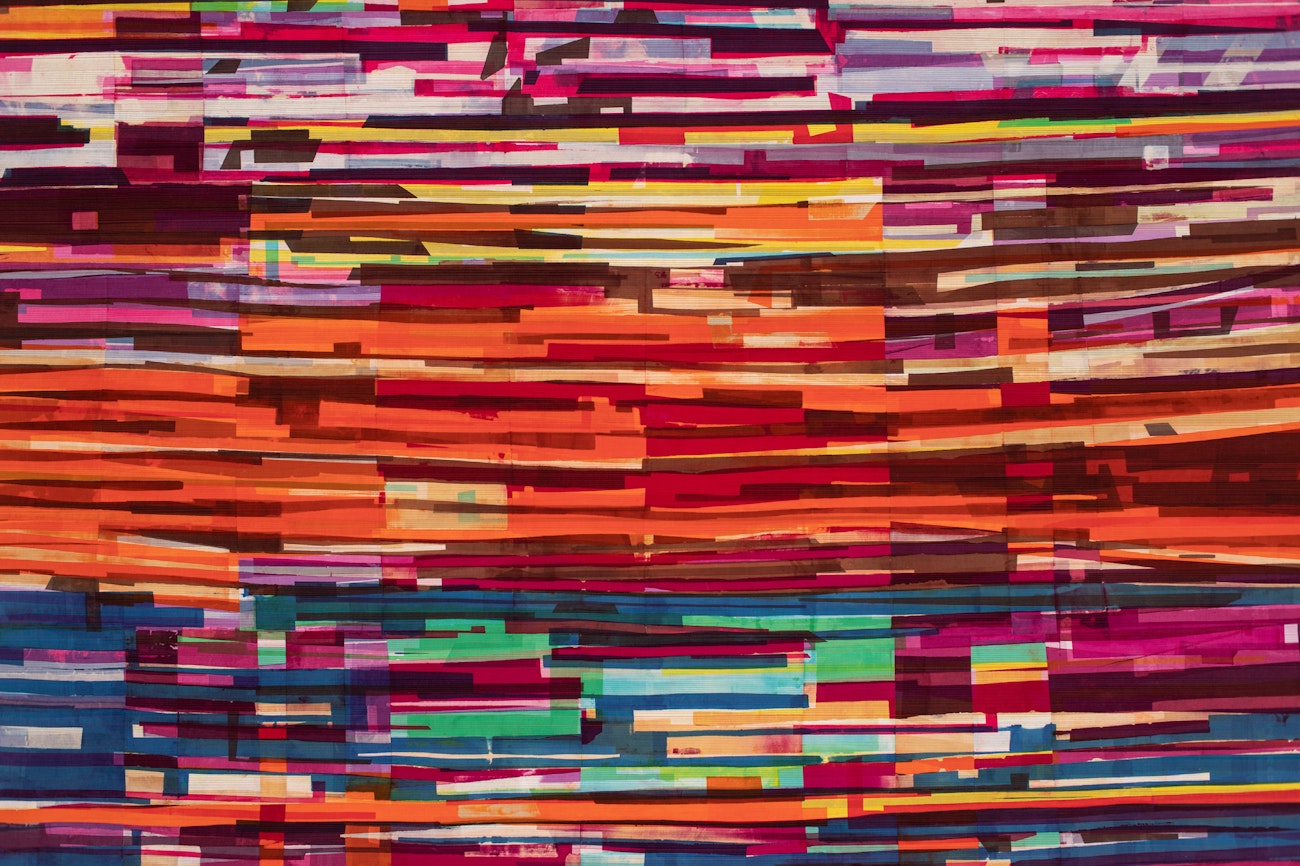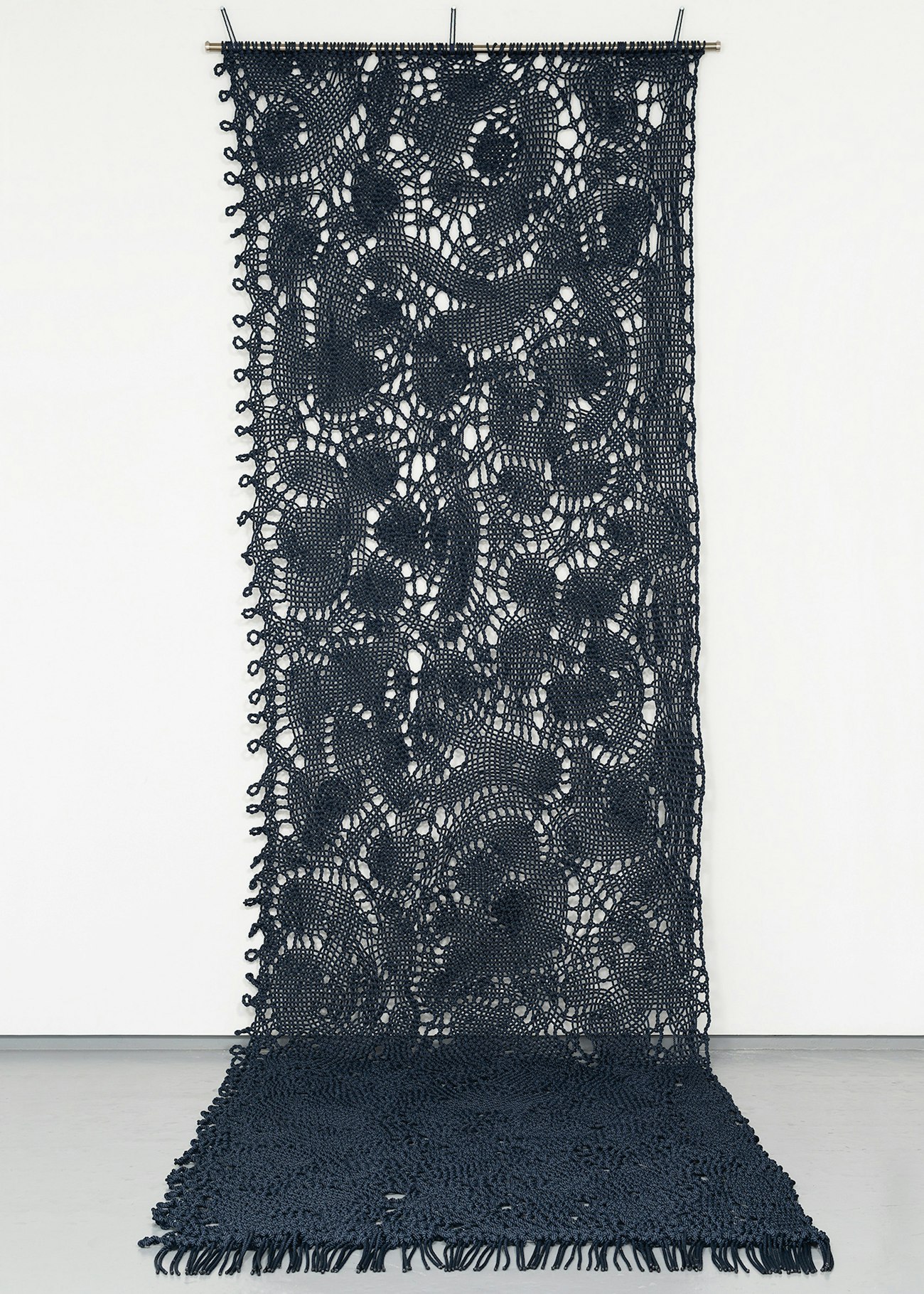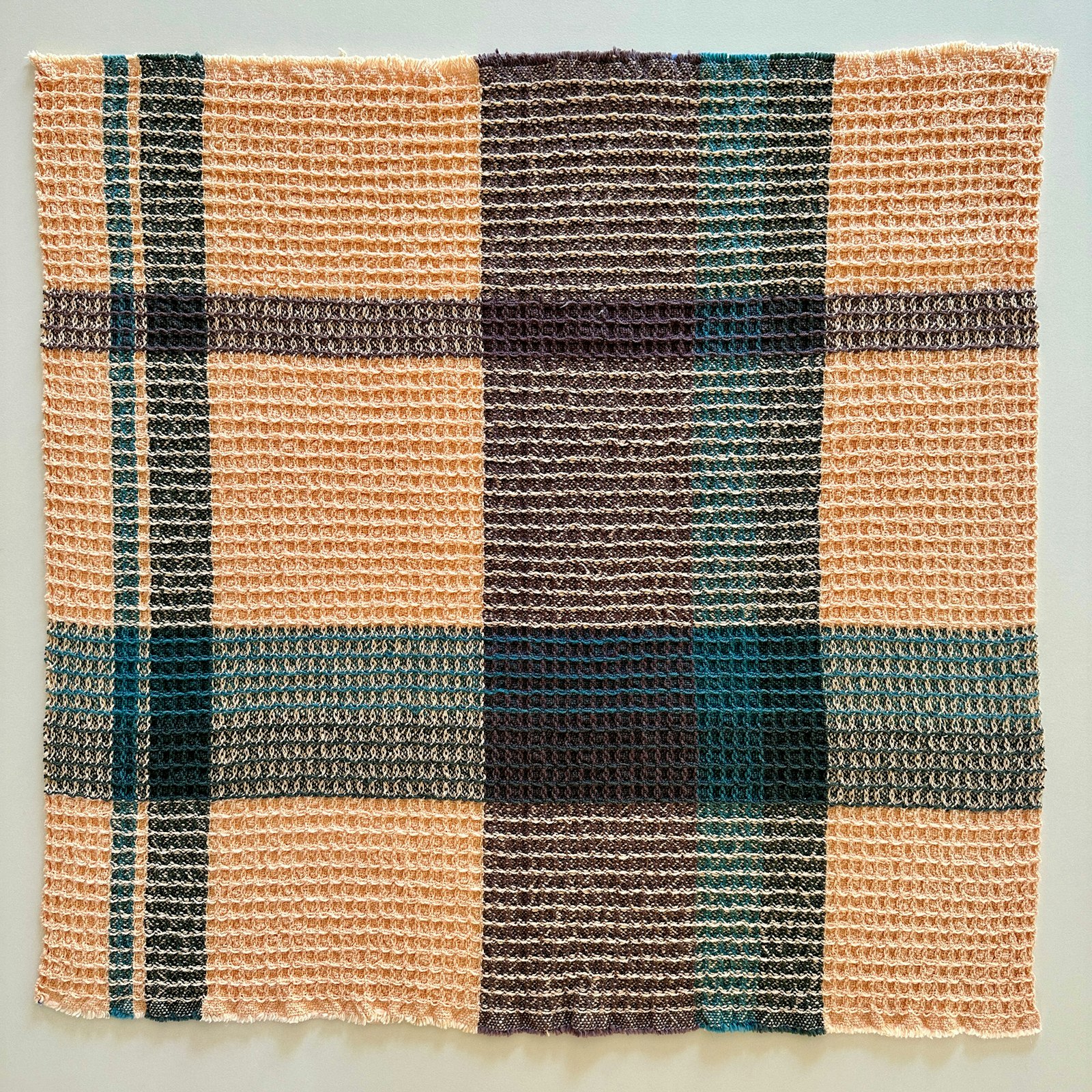Fiber art has been enjoying some long-overdue recognition since the 2019 exhibitions Weaving Beyond the Bauhaus at the Art Institute of Chicago and Taking a Thread for a Walk at the New York MoMA. Both shows explored the profound influence of Bauhaus weavers Anni Albers, Marli Ehrman, and Gunta Stölz over subsequent generations of fiber artists, and how weaving shows up in our everyday lives from functional, commercial applications to contemporary art.
Interlaced: The Fabric of Art at the Childs Gallery in Boston adds a new dimension to this conversation by showcasing modern fiber-art pieces alongside their traditional predecessors, including woven, knit, lace, and quilted cloth. Such handwork was historically regarded as “women’s work” and, no matter how masterfully executed, relegated to the realm of “craft” while the former are more readily categorized as “art.”
 Event Horizon No. 1, 2022 by Rodger Blum, American (b.1962) is a stunning example of improvisational silkscreen and hand painting with reactive dyes. Photo courtesy of the artist and J. Kevin Fitzsimmons, photographer.
Event Horizon No. 1, 2022 by Rodger Blum, American (b.1962) is a stunning example of improvisational silkscreen and hand painting with reactive dyes. Photo courtesy of the artist and J. Kevin Fitzsimmons, photographer.
This show asks the viewer to consider the connection between a handmade object and its utility, that object’s utility relative to its value, and, ultimately, its designation as “art” or “craft.” If a piece of cloth adorns a bed or a kitchen counter, it is certainly more functional than if it were hung on a wall, but is it less artistic or less valuable? If a textile is impractical as the garment that it was modeled after, is it categorized as art?
This interlacement, if you will, of function and aesthetic also provokes questions about gender, economics, and race. Who, historically, made these types of objects? How were these makers and these objects valued by society?
 Pierre Fouché used bobbin lace to create his Temporal Consciousness Access. Photo courtesy of the artist and WHATIFTHEWORLD Gallery.
Pierre Fouché used bobbin lace to create his Temporal Consciousness Access. Photo courtesy of the artist and WHATIFTHEWORLD Gallery.
Textile shows are not new to Boston. The city’s storied arts and educational institutions house impressive collections, and fiber-art shows are in constant rotation among the contemporary galleries. Exhibiting fiber art in the wake of its current popular swell is smart. But it is both interesting and important that Childs, one of Newbury Street’s oldest commercial galleries, has chosen to include and elevate traditionally marginalized (aka, noncommercial) “handwork” alongside work from commercially established artists.
Interlaced: The Fabric of Art does not simply present textiles as “wall-worthy” art or sculpture, but explicitly challenges our perceptions around quotidian cloth and compels us to consider more nuanced questions about both object and maker.
Interlaced opens on November 16, 2023, and runs through January 6, 2024. An opening reception will be held on November 17, from 6 to 8 p.m., at the Childs Gallery.
CHRISTINE JABLONSKI is a weaver and fiber artist and the director of content and customer experience at Gist Yarn.

